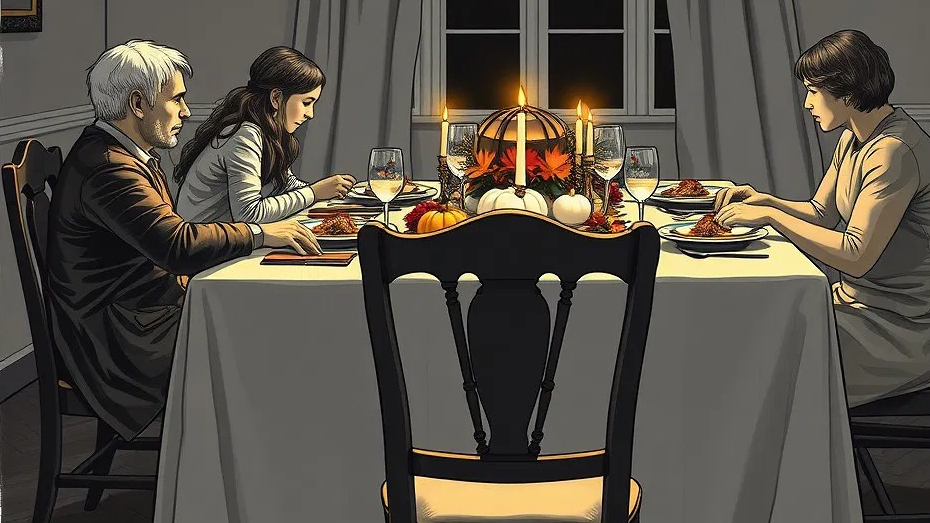Find a Trusted Proivder
Helpful Links

Business Hours
- Mon - Fri
- -
- Sat - Sun
- Closed

Share This Article
No funeral is complete without a wreath of beautiful flowers, which always come in various shades and hues of white, yellow, red, pink, and purple. The use of flowers during funerals dates back to the early centuries and was widely practiced by the Greeks, Chinese, and ancient Egyptians.
Flowers were used to suppress unpleasant odors during funerals since natural burials were more common. Over the centuries, modern methods of preserving bodies were introduced, and flowers were presented to the bereaved and the deceased as gifts. Today, popular flowers at funerals are used to express love and sympathy for the living, while for the dead, they're a token of respect.
So what are different flowers used in funerals, and what do they mean? Does the color of a flower really matter, and what are the considerations for choosing funeral blooms? In this post, we explain the meaning of flowers at funerals in different cultures and also identify popular flowers and their names.
The Colors of Popular Flowers and Their Meanings
Before you pick that beautiful flower you want to bring to a funeral, you must understand what the color represents and what it would mean to the deceased and the grieving family. Here is a list of popular flowers and their meanings to help you make informed decisions.
Red
Forget about Valentine's Day for a moment. Red flowers are also a common sight during funerals, and they often stand out thanks to their loud, bright hues. Red funeral flowers represent love and beauty and are usually given to the grieving family. Giving red flowers to the bereaved means you love them and think of them during that trying moment.
White
White sympathy funeral flowers represent remembrance and new beginnings. They mainly symbolize purity and innocence and are best given to parents who have lost a child.
Yellow
Bright yellow flowers are like light shining brightly in a dark place. While grief is a heavy burden that no flower can cheer it away, giving a grieving family yellow flowers means you think of them warmly and will stand by them through it all.
Purple
Dark, bright, beautiful purple is another color of love and care. They tell a family how much you love them and will stick by their side. It symbolizes respect and loyalty, which any bereaved person will appreciate.
Pink
Pink is the color of beauty and femininity. They're the perfect gift for a family that has lost a wife or matriarch.
12 Sympathy Flowers and To Bring To A Funeral
Now that you know what the different colors of flowers represent, the next time you're shopping for a bouquet, you know the right flowers to choose for the proper funeral. However, some sympathy flowers may be inappropriate or unacceptable in certain cultures, so you also want to get that right. Below, we explain the meaning of flowers at funerals in different cultures and the 12 sympathy flowers to help you express your love and support.
1. Carnations
Carnations are sympathy funeral flowers and a favorite with mourners thanks to their intoxicating scent and stunning ruffled petals. They're commonly used as funeral wreaths and especially during memorial arrangements. Red carnations symbolize friendships and tell a family you'll stick by their side. Pink carnations are perfect for keeping a loved one's memory alive.
Where to bring carnation flowers: Catholic and Christian funerals
2. Chrysanthemums
Another type of sympathy is flowers that mean different things to different people around the people. They're white and, pink and green with lush petals that make them stand out. In the United States, white chrysanthemums are light-hearted flowers perfect for honoring a life well lived. In Europe, the meaning is simple: chrysanthemums represent death and are used solely during memorial services or placed on graves. In Asia, the meaning is the same, and they're used to express grief.
Where to bring chrysanthemum flowers: Funerals where the family is of European or Asian origin.
3. Lilies
Tiny, beautiful lilies represent new beginnings, and giving them to a family reminds them that their loved one is gone but not forgotten. You can also give them to the bereaved to encourage them to have a positive and new outlook on life. If the family is Christian, the lily reminds them that their loved one's departed soul has undergone a renewal.
Where to bring lilies: A Christian funeral.
4. Orchids
Orchids tend to survive longer than other funeral flowers, which is why they're used in funerals to demonstrate eternal love for the departed. However, there are different types of orchids, so you should be keen on the message you want to pass to the family with your choice of orchids. Pink and white options often symbolize innocence and memories, making them a great choice of sympathy flowers.
Whom to gift orchids: A spouse who's lost their significant other.
5. Roses
Rosses speaks the language of love, which we can express even in death. White roses stand for remembrance, while red represents love. A combination of red and white roses at a funeral simply says you're here to remember and honor a loved one.
Whom to give a bunch of roses:
You or the grieving family. Place them on the casket to honor the memory of a dearly loved one.
6. Daffodils
Daffodils are for celebrations, not grief. You can bring them to a memorial service to celebrate a well-lived life. Daffodils represent rebirths and new beginnings, so getting them to the funeral means you want to remind the family that death is just a transition, not the ultimate end. Since they're bright and colorful, these blooms are great options for funeral arrangements.
7. Forget-Me-Nots
Forget me notes are popular funeral flowers, and as the name suggests, they're used to immortalize memories. You can use them to express how much the deceased meant to you. A bouquet of blue Forget-Me-Nots lets the family know how deeply their loved one impacted their life and how you intend to cherish their memory forever.
Whom to give a bouquet of Forget-Me-Nots:
Funeral service of a person who meant much to you.
8. Gladioli
Featuring a relatively long stem, bright petals, and an array of beautiful colors, the Gladioli is synonymous with a rebirth and represents character and strength. When you give a family a bouquet of Gladioli funeral flowers, you're basically telling them to be strong during such a challenging time. You're also telling them you remember their loved one for their resilience and fighting spirit. This arrangement is perfect for mourning someone who died after a long battle with illness.
Whom to give Gladioli flowers: Funeral service of a victim of a long illness, bravely borne.
9. Hibiscuses
Hibiscus is a native of the Pacific and is a popular flower at Hawaiian funerals. Thanks to its delicate, feminine, and beautiful nature, it's commonly used to mourn the loss of a wife or family matriarch. If you know someone who's lost an important woman in their life, consider bringing them white and pink hibiscus, especially if they're of Hawaiian or Pacific descent.
Whom to give hibiscus flowers: A family mourning an important woman or a family of Pacific Island origin.
10. Lilacs
Lilacs are popular funeral flowers for children and young people. They depict innocence, youth, and purity. These stunning purple blooms have a strong, sweet aroma that can be comforting and refreshing.
Whom to give lilacs: Families who have lost a child or young person.
11. Tulips
Tulips may not be the most popular funeral flowers out there. Still, they often convey hope and cheerfulness so consider bringing some to a funeral to encourage the family. Yellow tulips are excellent for brightening the dark side mood typical of loss.
Whom to give tulips: A bereaved family in need of encouragement.
How To Arrange Sympathy Flowers
Now that you know precisely which sympathy flowers to purchase for a particular funeral, you might also want to learn how to present or arrange the flowers. You can choose to buy a wreath or arrange freshly cut bouquets. Here are some ideas on how best to express your sympathy through flowers.
Wreaths
Sympathy wreaths are for memorial services, often sprayed on the easels next to the casket. They make a perfect display near large floor baskets, complete with a banner. To create a personalized display, add a name such as “Dad” or “Grandpa” to the wreath.
Fresh Cut Sympathy Flowers
Fresh-cut bouquets are great for conveying condolences during a memorial service or home gathering. A bouquet of fresh orchids, lilies, and roses will smell amazing and look beautiful.
Potted Plants
These are best delivered to the family at home. After the funeral, consider sending a large pot of roses, calla lilies, orchids, and bonsai trees to let the family know you're still thinking of them.
When And Where To Send Sympathy Flowers
When sending sympathy flowers, you want to ensure your intentions aren't misunderstood since funeral flowers have different meanings in different cultures. That's where observing sympathy flower etiquette is vital. For example, if the family requests privacy during the mourning period, you may want to take the flowers to the funeral home instead of directly to the family home.
Observing the right time to send flowers is also crucial. If delivering to the funeral, ensure it arrives at the right time before the cottage leaves for the memorial service venue or the cemetery. It's much better to observe punctuality even as you express your condolences. The family will most likely appreciate your showing up earlier than later. However, if you plan to send the flowers home, there are no time restrictions, and you can deliver them in person. You can even send flowers several weeks after the funeral.
Other Considerations for Sending Sympathy Flowers
If you want to send your condolences to a family through flowers, consider a few things, like the family's privacy wishes. For example, they may request donations to the deceased's charity initiatives instead of a floral arrangement or gift.
Since flowers have different meanings across various cultures, do a little homework to ensure your intentions align with the family's religious and cultural beliefs. Some cultures, like the Jews, don't support flower arrangements
as part of their funeral rituals. Sometimes, honoring their spiritual and cultural traditions is the best way to express sympathy.
In Conclusion
Nothing can take away the pain of death, not even the sight or smell of beautiful flowers. There's also no perfect way to grieve a loved one, and everyone can express their sorrow in their unique way. However, flowers are a universal expression of grief and sympathy accepted the world over.
From lilies to roses to lilacs and orchids, these beautiful blooms speak the same language of love, beauty, and remembrance. Our
community of dedicated florists has a wide selection of flowers for every type of funeral. Feel free to browse through various designs and
contact a florist near you.
Related Articles
Related Articles





